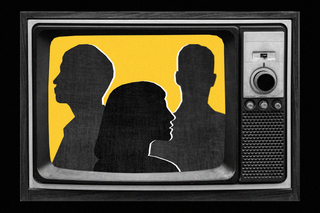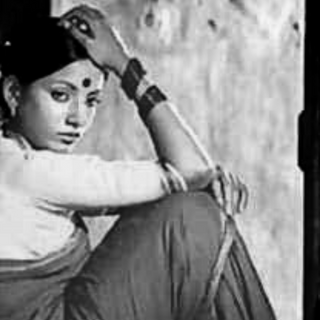
In Sympathizing With People Linked to ‘Bulli Bai,’ the Media Trivializes Systemic Violence
Why should 18-year-olds have license to dehumanize Muslim women or any community, or even be condoned for doing so?

On January 1st, more than 100 Muslim women woke up to find their faces on an app called “Bulli Bai,” waiting to be auctioned. This was the second time in less than a year their photos were misused; the platform and the intent were similar to the first “Sulli Deals” incident. Both incidents which were attempts to dehumanize Muslim women,happened on GitHub. Four days later, the police have made three arrests: an 18-year-old and two 21-year-olds, noting there may be other people involved in the incident.
It is the conversation around these perpetrators that has proven to be more unsettling. Some are quick to isolate this act as a “fringe incident”; some are writing 500-word explainers on the 18-year-old woman and her parents’ illnesses; others are jumping to their defense to clarify these perpetrators aren’t masterminds, but just misguided young people.
It begs the question: Are these mere misconceptions people hold? Or deliberate attempts to humanize criminal behavior and discount personal biases?
Interestingly, many news reports, while referring to Singh, Jha, and Rawal, mockingly use the term “masterminds.” The implication seems to be twofold: that they are incapable of “serious” violence, and their act is not as egregious as people are making it out to be. The response is one of disbelief.
However, this rhetoric works as a thin discourse, hiding the desire to defend the Shweta Singhs, Vishal Kumar Jhas, and Mayank Rawals of the world. An engineer, a woman, or a young person can be capable of Hindutva hate — it is the result of systemic violence and prejudices that are passed on like traditions in families across generations. No wonder children as young as 10 to17-year-olds feel emboldened to refuse meals cooked by a Dalit cook at schools. Or students from gender or religious minorities face rampant discrimination in educational institutions. Or Komal Sharma, a Jawaharlal Nehru University student, who was recorded vandalizing, and beating students and activists.
Why should an 18-year-old have a license to dehumanize Muslim women or any community, or even be condoned for doing so?
Related on The Swaddle:
‘Sulli Deals’ Exposed the Common Roots of Misogyny and Islamophobia
Some haveexpressed astonishment at an engineer being capable of a heinous act. But in India, engineers sit atop a reputation of being well-educated and well-mannered; in one report, Vishal is described as “an average student of engineering.” Such presumptions are inherently classist; several cases of rape and caste discrimination in premier engineering schools betray the level of prejudice. In this case, Vishal is reportedly a repeat offender, who has celebrated Muslim killings and rape by Hindutva activists in the past. On Wednesday, the Dayananda Sagar College of Engineering, Bengaluru, where he studies, refused to take punitive action and will most likely go on to finish his degree without facing penal actions. “He is a young student and we have to think about his career too. It is not yet clear whether he is guilty. We are not planning any action as of now,” a college official told The Quint.
When Shweta Singh was arrested yesterday, the shock was gendered. But the truth has been around for long: patriarchy affects women irrespective of religion, and Hindu women are often part of the Savarna machinery. On Wednesday, news reports focused on her parents recovering from cancer or Covid19, or that she was preparing to be an engineer — as if her personal grief justifies religious and communal hatred. That the media or civil society would feel tempted to sympathize with her story, or read more about it, reveals a bias that allows repeated violence.
The pattern is to shift attention from the crime to the perpetrators who are, “after all, humans.” Theyare characterized as “fringe groups” far away from the mainstream and systemic violence. The sympathy lens towards people belonging to the majority religion is not surprising. But it bears iteration that the trivialization is deliberate. It reeks of Islamophobic sentiments that go on to become the building blocks of systemic abuse.
Moreover, the discourse then becomes one of reforming the perpetrators — shifting the burden on doing so on the victims of such a crime. One famous personality, for instance, argued that young Shweta must be explained why she was wrong by elders and thus deserves forgiveness. The age is then a cloud of smoke to hide the deliberate malice of violence, and normalize it for a generation of people consuming hate content like fodder.
Needless to say, the idea is one to degrade and humiliate Muslim women. “The violent acts on women’s bodies were not targeted at them as individuals… A woman’s body became a site where one group tried to prove its religious supremacy over the other,” a paper noted, explaining the violence against Muslim women’s bodies during Partition.
In this case, religious supremacy and radicalization are discounted as a one-off instance — or worse, trivialized to protect perpetrators of systemic violence.
“The said GitHub is violent, threatening and intending to create a feeling of fear and shame in my mind, as well as in the minds of women in general, and the Muslim community whose women are being targeted in this hateful manner,” journalist Ismat Ara, one of the complainants whose photos were used, posted on social media.
“The women who have been targeted are vocal women who raise issues of Muslims on social media. It is a clear conspiracy to shut these Muslim women because we challenge the Hindu right-wing online against their hate crimes,” Ara added.
The bitter reality is one: radicalization has no age or gender. It is a hard pill to swallow, and these acts of humanizing perpetrators and trivializing the crime keep us from the truth.
Saumya Kalia is an Associate Editor at The Swaddle. Her journalism and writing explore issues of social justice, digital sub-cultures, media ecosystem, literature, and memory as they cut across socio-cultural periods. You can reach her at @Saumya_Kalia.
Related


Woe Is Me! “I Used To Be Ambitious, but Now I’m Tired of Hustling. Can I Stop?”
